#NatureZen: Oh, sweet Canada!
Words and photos by Melissa McMasters
If there’s one question I’m asked most often as a birder, it’s “What’s that bird that sings [distinct whistling song]?”
The answer–the singer of the melody often translated as “Oh, sweet Canada Canada“–is the white-throated sparrow. (Listen to it here. To my ears, the second song listed is the one we hear most frequently around these parts.)
White-throated sparrows are a daily presence in the Old Forest throughout the winter, and they’re especially active right now. They’ll hang around through late May, by which point most of them will have headed up to sweet Canada (and the far northern US) to breed.
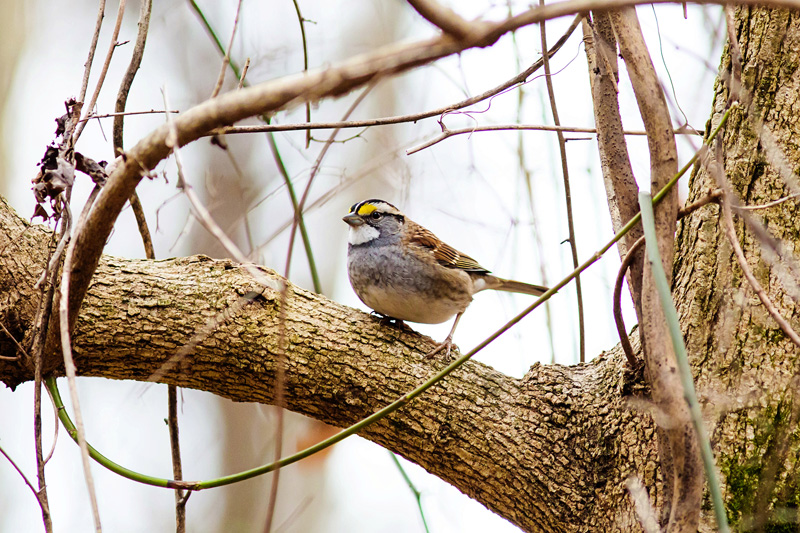
White-throated sparrows come in two color forms, or morphs: the “white-striped” pictured above, and the “tan-striped” pictured below. Unlike in most species, these morphs are determined by genetics, not sex, age or region, and the behaviors of the two varieties are strikingly different. Both males and females with white stripes are more aggressive and territorial, while tan-striped birds are more nurturing of their young. White-striped males sing more than tan-striped males; white-striped females sing a lot, but tan-striped females don’t sing much at all.
Mated pairs almost always feature birds of opposite color morphs, but that’s not necessarily because opposites attract: all the female birds prefer the tan-striped males, but the aggressive white-striped females get to them first. So the tan-striped females generally wind up with the less-desirable white-striped males by default. Here’s a species where the nice guys finish first! (If you find this fascinating and want to learn how scientists figured it out, click here.)
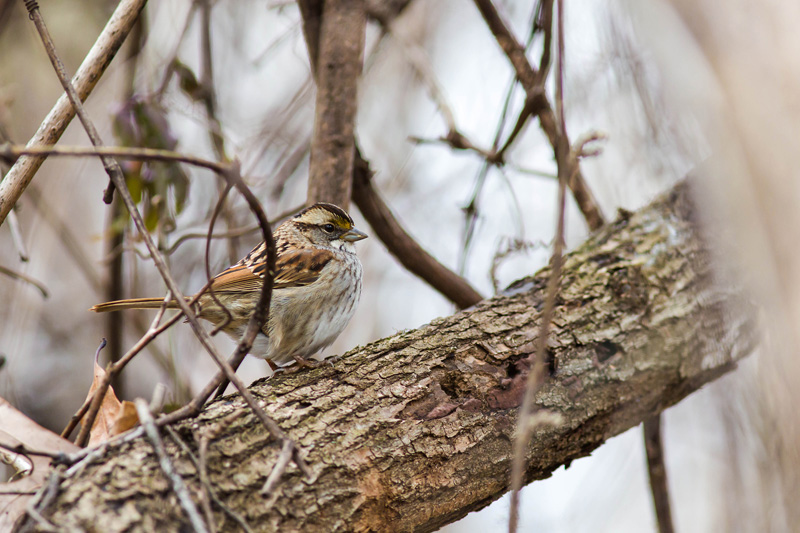
Many types of sparrows prefer a more open habitat than the Old Forest, but there are a few other species that we see fairly often. The fox sparrow is a secretive winter visitor to our area. They occur throughout the US, but in four different color morphs depending on where they live. Ours is the “red morph,” which gives the birds a rusty appearance.
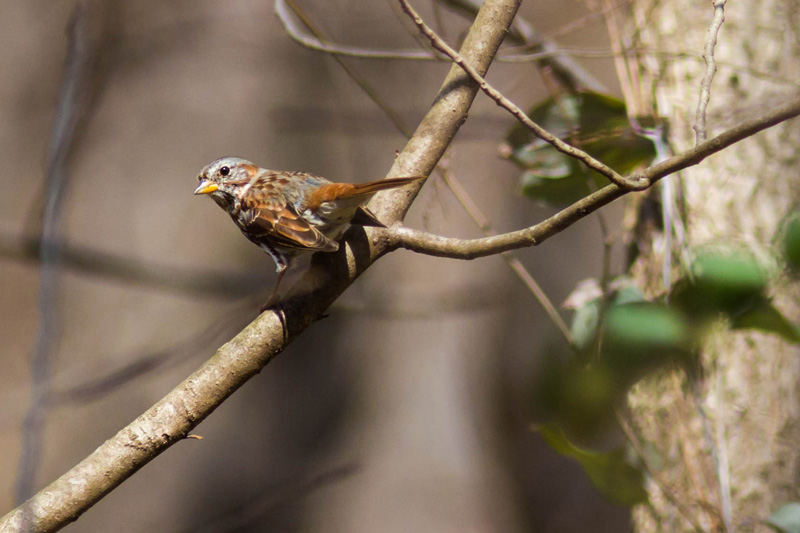
The Eastern towhee sticks around our area all year, and is most easily recognized by its call, which sort of, kind of sounds like “towhee” (you can listen here). Like other sparrows, you’ll find them on the ground doing a backwards hop: scratching the ground with both feet and jumping back to see what they’ve uncovered. This one’s a male; the females have the same pattern but they’re brown, not black.
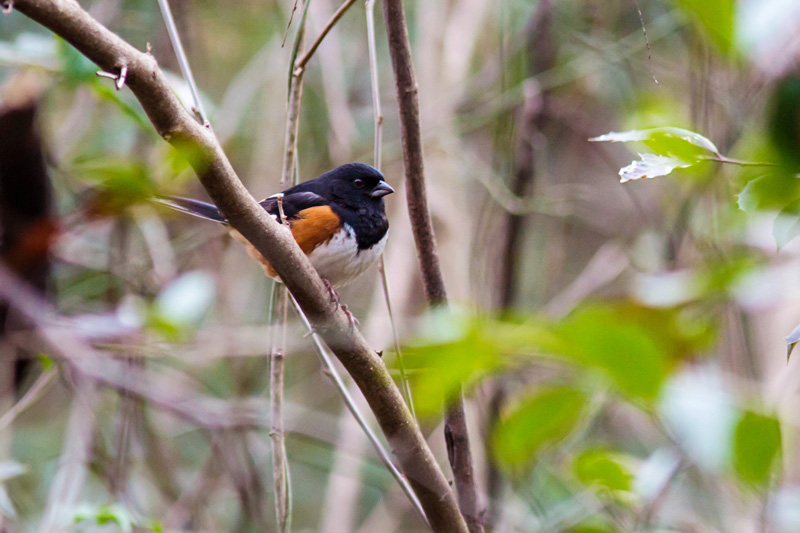
If you’ve got a bird feeder, you’ve been visited by dark-eyed juncos in the winter. They travel in flocks in search of seeds, tittering as they fly up from the ground and flash their white outer tail feathers.
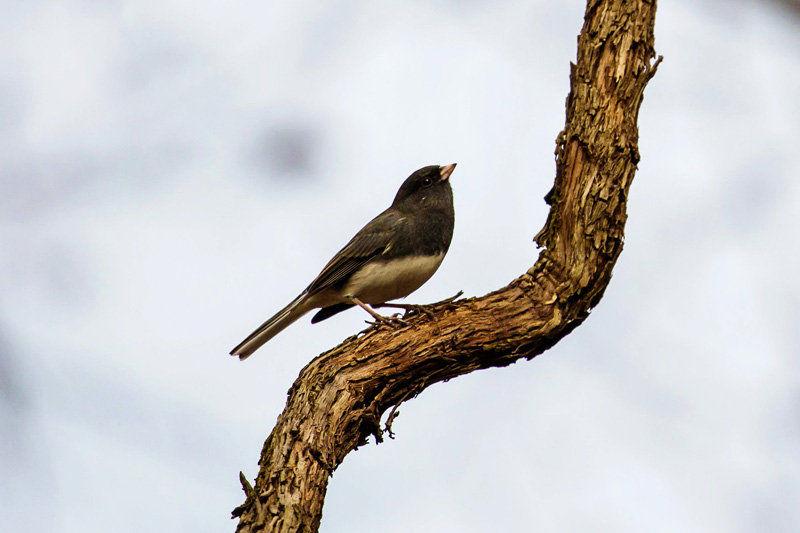
Seen any good birds lately? Post a photo on social media with the hashtag #ISawABird to participate in National Audubon Society’s spring migration celebration. We’re just starting to see our first warblers of the season, so rest assured there will be some beautiful yellow birds in future #NatureZen installments.



